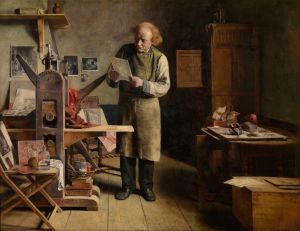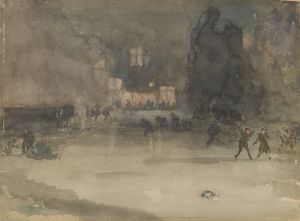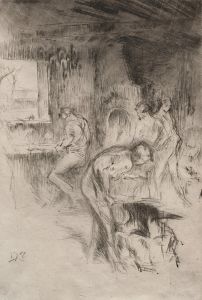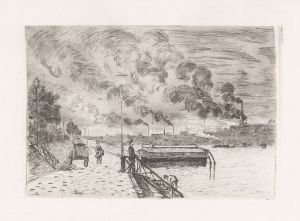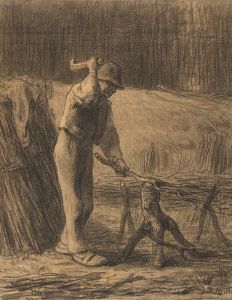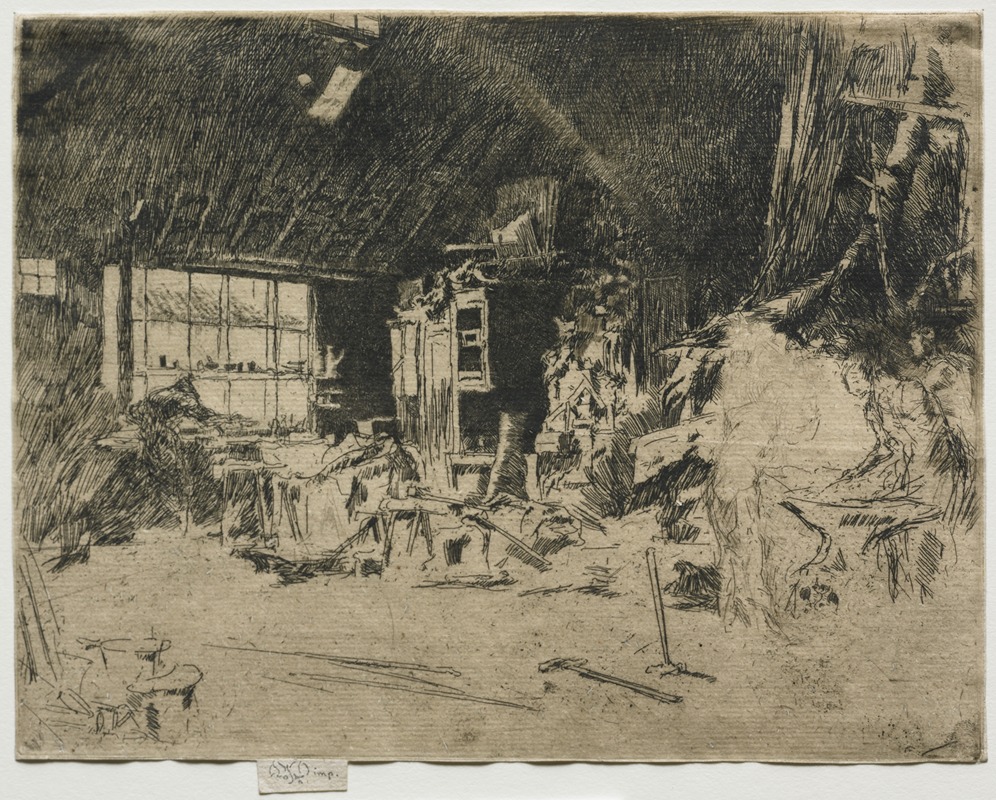
The Smithy
A hand-painted replica of James Abbott McNeill Whistler’s masterpiece The Smithy, meticulously crafted by professional artists to capture the true essence of the original. Each piece is created with museum-quality canvas and rare mineral pigments, carefully painted by experienced artists with delicate brushstrokes and rich, layered colors to perfectly recreate the texture of the original artwork. Unlike machine-printed reproductions, this hand-painted version brings the painting to life, infused with the artist’s emotions and skill in every stroke. Whether for personal collection or home decoration, it instantly elevates the artistic atmosphere of any space.
James Abbott McNeill Whistler's painting The Smithy is a work that reflects his interest in capturing scenes of everyday life with a focus on atmosphere and tonal harmony. Whistler, an American-born artist active in the 19th century, is widely known for his contributions to the Aesthetic Movement and his emphasis on "art for art's sake." While The Smithy is not among his most famous works, such as Arrangement in Grey and Black No. 1 (commonly known as Whistler's Mother), it nonetheless demonstrates his skill in portraying nuanced light and shadow.
The Smithy depicts a blacksmith's workshop, showcasing Whistler's ability to render industrial or working-class subjects with a sense of dignity and artistic refinement. The painting is characterized by its subdued color palette and careful attention to tonal balance, hallmarks of Whistler's style. He often sought to create compositions that were harmonious and evocative, prioritizing mood and aesthetic unity over detailed realism.
The exact date of the painting's creation is not definitively documented, but it is believed to have been produced during Whistler's mature period, when he was experimenting with various themes and techniques. During this time, Whistler was influenced by both the French Realist movement and Japanese art, which is evident in his focus on simplicity and composition.
As with many of Whistler's works, The Smithy reflects his interest in portraying the interplay between light and dark, as well as his ability to capture the essence of a scene with minimal detail. The painting is thought to be part of his broader exploration of labor and industry, subjects that were gaining attention in 19th-century art due to the social and economic changes brought about by the Industrial Revolution.
The current location of The Smithy is not widely documented, and it is not as frequently exhibited or studied as some of Whistler's other works. However, it remains an example of his dedication to creating art that transcends mere representation, aiming instead to evoke an emotional or aesthetic response in the viewer.
Due to limited available information about The Smithy, further details about its provenance, reception, and specific historical context are not well-documented in existing sources.







